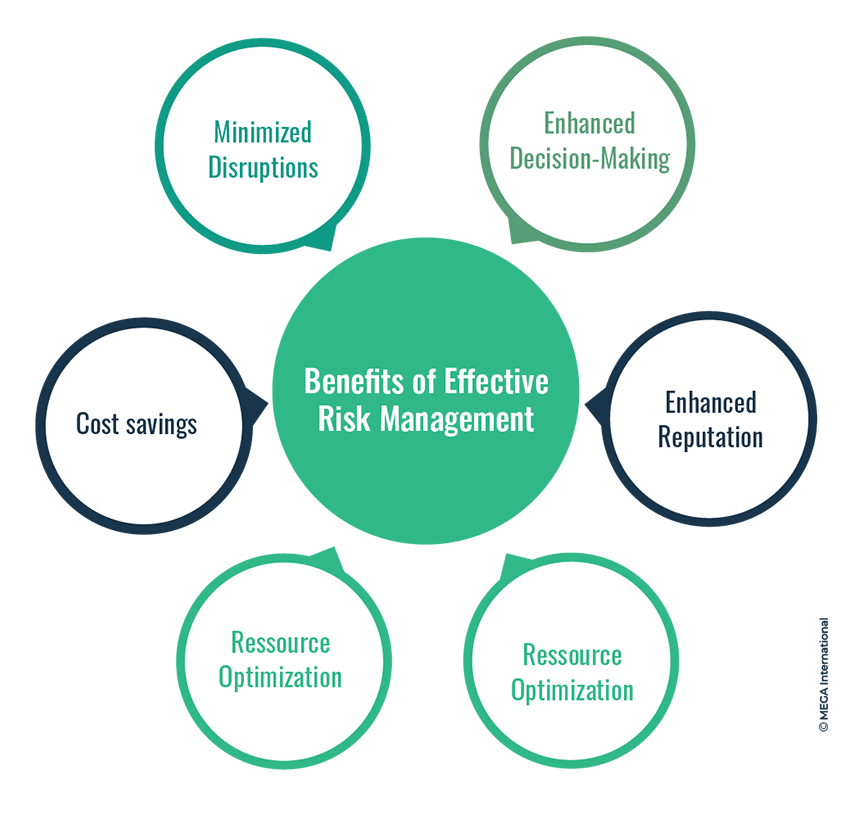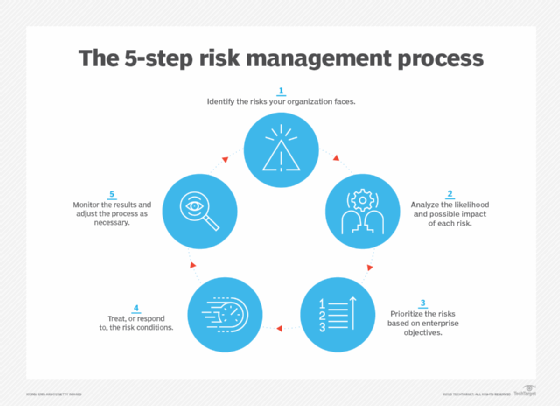The Influence of the Importance of Risk Management on Organizational Governance
The Influence of the Importance of Risk Management on Organizational Governance
Blog Article
Checking out the Significance of Risk Management for Effective Decision-Making Approaches
In the elaborate globe of service, Risk Management arises as an essential element in the decision-making procedure. The capability to recognize prospective risks and opportunities, and plan appropriately, can mean the distinction in between success and failing.
Comprehending the Concept of Risk Management
Risk Management, an essential element in decision-making, is frequently misunderstood or oversimplified. Usually, it refers to the identification, analysis, and prioritization of threats to minimize, check, and control the likelihood or effect of unfavorable occasions. It's not simply concerning preventing negative results, yet also concerning identifying potential opportunities. Risk Management includes disciplined and structured approaches, using data and insightful analyses. It requires a detailed understanding of the company's context, goals, and the possible dangers that can combat them. From monetary uncertainties, legal obligations, strategic Management errors, to mishaps and natural disasters, it resolves different threats. Significantly, effective Risk Management is not stationary; it's a continual, progressive procedure that progresses with transforming conditions.
The Role of Risk Management in Decision-Making Processes
In the world of strategic planning and service operations, Risk Management plays an integral function in decision-making processes. Risk Management hence becomes a vital tool in decision-making, helping leaders to make informed choices based on an extensive understanding of the risks entailed. Risk Management offers as an important element in the decision-making processes of any organization.

Exactly How Risk Management Boosts Strategic Planning
In the context of critical preparation, Risk Management plays a critical role. Launching with the recognition of potential threats, it better reaches the application of Risk reduction steps. The role of Risk Management is dynamic yet not fixed, as it demands constant monitoring and adjusting of techniques.
Identifying Potential Threats

Applying Risk Reduction
Having actually established the significance of determining prospective dangers, the following action is to discover Risk mitigation. This process includes establishing and applying strategies to handle identified dangers effectively. It is a critical aspect of calculated preparation as it boosts decision-making by reducing possible negative end results. Risk mitigation approaches can vary from Risk avoidance, Risk transfer, to run the risk of decrease. Each approach should be tailored to the particular Risk, considering its prospective effect and the company's Risk resistance. In addition, reliable Risk reduction requires a deep understanding of the Risk landscape and the possible influence of each Risk. This understanding enables companies to prioritize risks and allot sources efficiently, guaranteeing that one of the most substantial risks are addressed initially.
Surveillance and Adjusting Strategies
Though Risk reduction is an important step in strategic preparation, continual surveillance and modification of these strategies is click for source similarly important. This recurring process allows companies to identify brand-new dangers and reassess existing ones, guaranteeing the applied methods remain reliable in the ever-changing service environment. It likewise gives a chance to evaluate the success of the Risk Management procedures, enabling modifications to be made where essential, more improving tactical planning. Effective surveillance and modification require using analytics and essential efficiency indications (KPIs) to measure effectiveness. These tools give valuable data-driven insights that can inform calculated decision-making. Surveillance and readjusting Risk Management approaches is a crucial element for enhancing an organization's durability and calculated preparation.
Situation Studies: Successful Risk Management and Decision-Making
In the world of organization and money, effective Risk Management and decision-making commonly serve as the columns of thriving enterprises. These instances highlight the value of astute Risk Management in decision-making procedures. These cases emphasize the essential duty of Risk Management in strategic decision-making.
Tools and Strategies for Efficient Risk Management
These tools, such as Risk registers and heat maps, aid in identifying and evaluating prospective dangers. Risk reaction methods, a crucial part of Risk Management, entail approving, avoiding, moving, or mitigating threats. With these devices and strategies, decision-makers can browse the complicated landscape of Risk Management, thereby helping with informed and effective decision-making.
Future Trends in Risk Management and Decision-Making Strategies
As we explore the substantial landscape of Risk Management, it ends up being obvious that the devices and strategies utilized today will certainly proceed to evolve. Future trends direct in the direction of an increased reliance on innovation, with expert system and artificial intelligence playing substantial duties. These innovations will certainly enable organizations to predict prospective dangers with higher accuracy and make more informed choices. Additionally, there will be an expanding emphasis on resilience, not just in taking care of threats however likewise in bouncing back from unfavorable scenarios. Last but not least, the idea of Risk society, where every member of a company understands and included in Risk Management, will certainly obtain much more importance. These trends advertise an even more comprehensive and proactive strategy in the direction of Risk Management and decision-making.
Verdict

Risk Management therefore ends up blog being an important tool in decision-making, aiding leaders to make enlightened options based on an extensive understanding of the risks involved. Risk mitigation strategies can vary from Risk avoidance, Risk transfer, to run the risk of reduction (importance of risk management). Reliable Risk mitigation calls for a deep understanding of the Risk landscape and the potential influence of each Risk. Risk action techniques, a key part of Risk Management, include accepting, staying clear of, moving, or mitigating risks. The concept of Risk society, where every member of a company is conscious and included in Risk Management, will certainly obtain extra prominence
Report this page